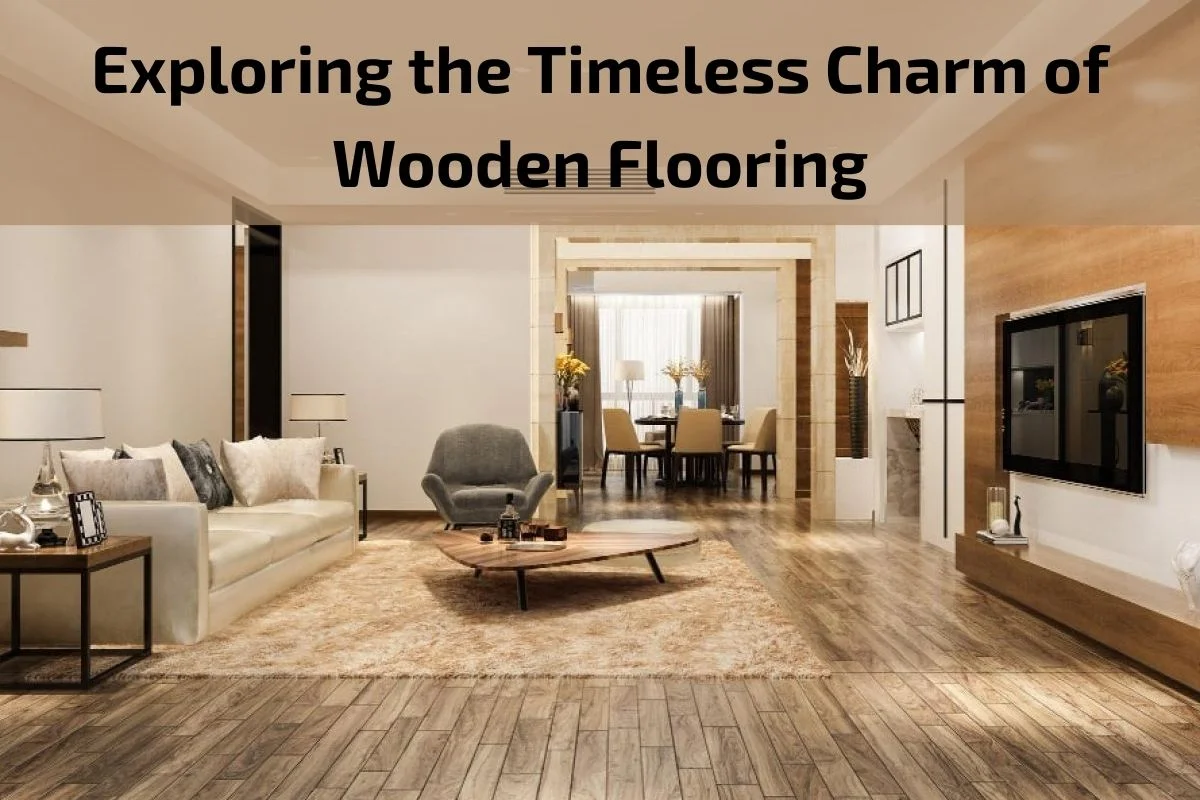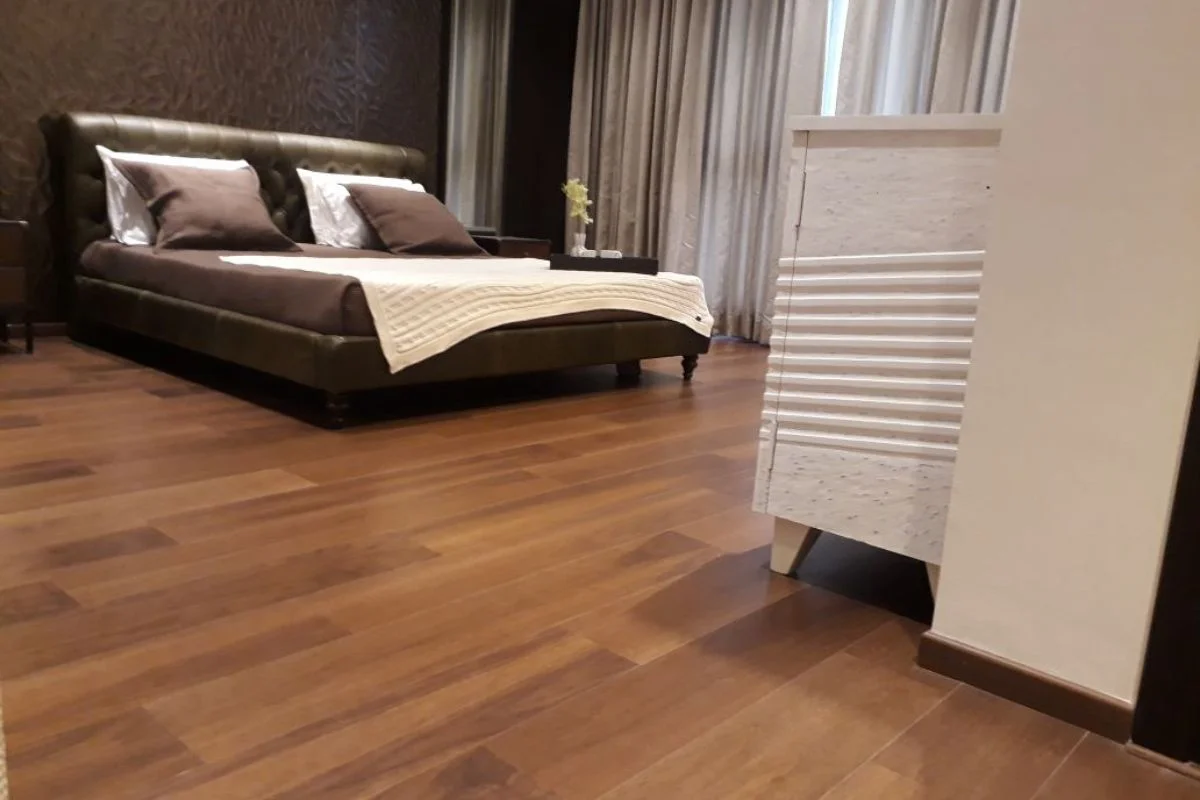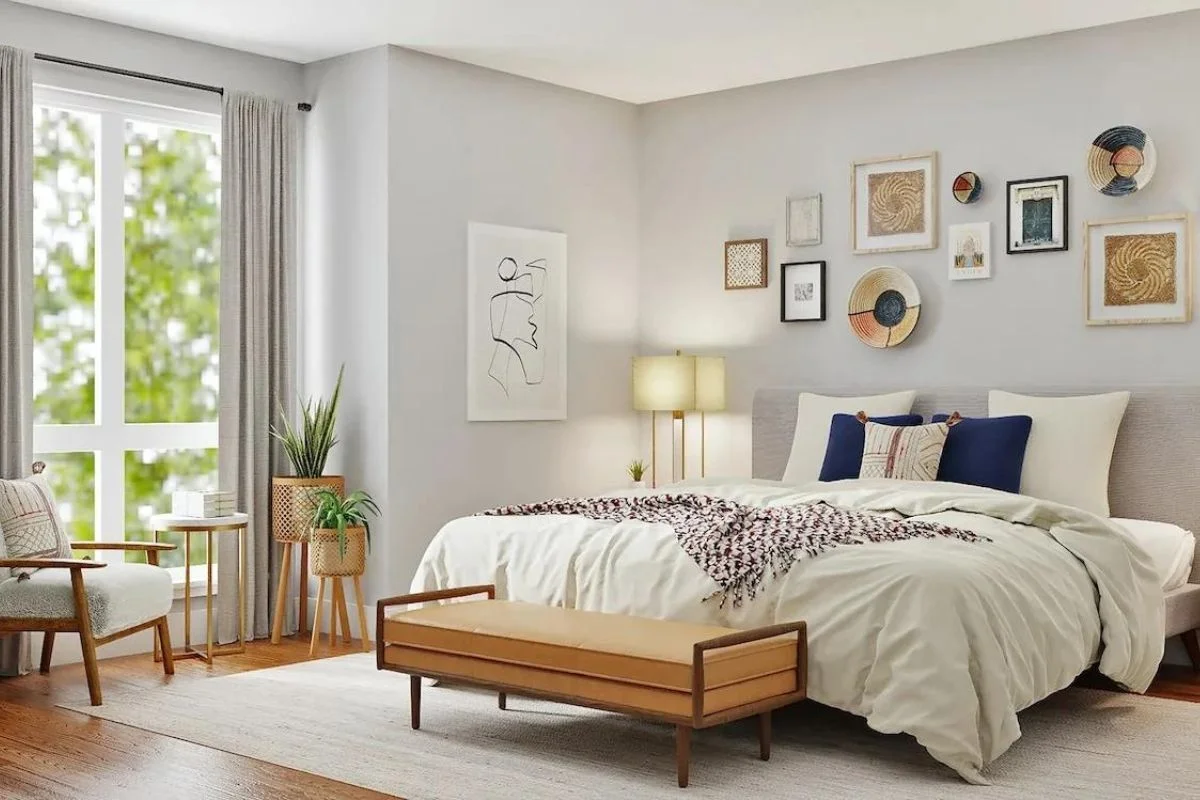
Wooden flooring stands as a timeless symbol of elegance and sophistication in interior design, captivating homeowners and designers alike with its natural beauty and enduring appeal. From the warmth of rustic hardwoods to the sleekness of modern engineered planks, wooden flooring has the remarkable ability to transform any space into a sanctuary of style and comfort.
In today’s fast-paced world of design trends and innovations, wooden flooring remains a steadfast choice, cherished for its unmatched charm and versatility. Its ability to complement a wide range of design aesthetics, from traditional to contemporary, makes it a beloved staple in homes, offices, and commercial spaces worldwide.
In this exploration of the timeless charm of wooden flooring, we delve into the rich history, enduring allure, and practical benefits that have solidified its place as a design classic. From the natural variations of grain patterns to the inviting warmth of its hues, wooden flooring invites us to reconnect with the beauty of nature in our living spaces.
Join us on a journey through the enchanting world of wooden flooring, where tradition meets innovation, and timeless elegance reigns supreme. Discover the stories behind the grains, the craftsmanship that brings them to life, and the transformative power they hold in shaping the spaces we inhabit.
Brief overview of wooden flooring
Wooden flooring, a hallmark of timeless elegance and enduring charm, has been a staple of interior design for centuries. Crafted from various species of wood, wooden flooring adds warmth, character, and sophistication to any space, be it a cozy home or a bustling commercial establishment.
The appeal of wooden flooring lies not only in its natural beauty but also in its versatility and durability. From classic hardwoods like oak and maple to exotic varieties such as Brazilian cherry and teak, wooden flooring offers a diverse array of options to suit every taste and style preference.
Beyond its aesthetic appeal, wooden flooring boasts practical benefits as well. Its sturdy construction and resilient nature make it an ideal choice for high-traffic areas, while its easy maintenance requirements ensure that it retains its luster and beauty for years to come.
Whether installed in traditional homes, modern apartments, or rustic cottages, wooden flooring infuses every space with a sense of warmth, character, and sophistication. Its timeless appeal transcends fleeting design trends, making it a cherished investment that adds value and elegance to any property.
In this article, we will explore the myriad benefits, design possibilities, and practical considerations associated with wooden flooring, inviting readers to discover the timeless allure of this beloved flooring option.
Importance of wooden flooring in interior design
Wooden flooring plays a pivotal role in interior design, serving as both a functional foundation and a design statement that sets the tone for a space. Its importance can be understood through several key factors:
Aesthetic Appeal: Wooden flooring brings a natural warmth and beauty to interiors that few other materials can match. The rich grain patterns, varied tones, and textures of wood create a sense of visual depth and sophistication that enhances the overall ambiance of a room.
Versatility: One of the standout features of wooden flooring is its versatility. It can seamlessly adapt to a wide range of design styles, from traditional to contemporary, rustic to minimalist. This adaptability makes wooden flooring a timeless choice that can complement any interior theme or decor scheme.
Enhanced Value: Wooden flooring is often associated with high-quality craftsmanship and timeless elegance. As such, it can significantly enhance the perceived value of a property. Homes and commercial spaces with well-maintained wooden flooring tend to command higher resale values and attract discerning buyers or tenants.
Durability and Longevity: Wooden flooring is renowned for its durability and longevity. When properly installed and maintained, it can withstand years of foot traffic, making it a practical investment for both residential and commercial properties. Additionally, unlike other flooring materials that may need replacing every few years, wooden flooring can last for decades with proper care.
Timeless Appeal: Unlike trends that come and go, wooden flooring has stood the test of time, retaining its appeal across generations. Its classic elegance ensures that it remains relevant even as design preferences evolve, making it a sound long-term investment for homeowners and designers alike.
Natural Comfort: Wooden flooring offers a level of comfort that is unmatched by many other flooring options. Its natural warmth and insulation properties provide a cozy underfoot feel, making spaces feel inviting and comfortable throughout the year.
Environmental Sustainability: With growing awareness of environmental issues, many homeowners and designers are turning to sustainable flooring options. Wooden flooring, when sourced from responsibly managed forests or reclaimed sources, can be an eco-friendly choice that reduces environmental impact and promotes sustainability.

Advantages and Disadvantages of Wooden Flooring
Advantages of Wooden Flooring:
Timeless Aesthetic Appeal: Wooden flooring brings warmth, character, and natural beauty to any space, enhancing the overall ambiance and visual appeal of the room.
Versatility in Design: With a wide range of wood species, finishes, and patterns available, wooden flooring offers versatility to complement various interior design styles and preferences.
Durability and Longevity: High-quality wooden flooring is known for its durability and longevity, capable of withstanding heavy foot traffic and maintaining its appearance for many years with proper care.
Easy Maintenance: Wooden flooring is relatively easy to clean and maintain, requiring regular sweeping and occasional mopping to keep it looking its best.
Environmental Sustainability: When sourced from responsibly managed forests or reclaimed sources, wooden flooring can be an eco-friendly choice that promotes sustainability and reduces environmental impact.
Disadvantages of Wooden Flooring:
Susceptibility to Moisture Damage: Wooden flooring is susceptible to damage from moisture and humidity, which can cause warping, swelling, and cupping of the wood if not properly protected.
Vulnerability to Scratches and Dents: Despite its durability, wooden flooring is prone to scratches, dents, and gouges from heavy furniture, pet claws, and sharp objects. While surface scratches can often be repaired or concealed, deep gouges may require more extensive repair work.
Initial Cost: The upfront cost of wooden flooring, particularly hardwood varieties, can be higher compared to other flooring options such as carpet or laminate. However, many homeowners view wooden flooring as a long-term investment that adds value to their property over time.
Maintenance Requirements: While wooden flooring is relatively easy to maintain, it does require regular upkeep to preserve its appearance and performance. This includes periodic refinishing, sealing, and addressing any issues such as scratches or water damage as they arise.
Environmental Impact: While wooden flooring can be sustainable when sourced responsibly, the production and transportation of wood products can still have environmental implications, including deforestation and carbon emissions. It’s important to choose certified sustainable wood products whenever possible to minimize environmental impact.
Types of Wooden Flooring
Solid Hardwood Flooring:
- Solid hardwood flooring is made from a single piece of wood, typically 3/4 inches thick.
- It is known for its authenticity, durability, and ability to be refinished multiple times.
- Solid hardwood flooring comes in various wood species, including oak, maple, cherry, and walnut, each offering unique grain patterns and colors.
Engineered Hardwood Flooring:
- Engineered hardwood flooring consists of multiple layers of wood veneer bonded together with adhesives.
- The top layer is made of high-quality hardwood, while the bottom layers are constructed from plywood or fiberboard.
- Engineered hardwood is more dimensionally stable than solid hardwood and is suitable for installation in areas with fluctuating humidity levels, such as basements or kitchens.
Laminate Wood Flooring:
- Laminate wood flooring is a cost-effective alternative to hardwood, featuring a high-resolution image of wood printed onto a fiberboard core.
- It is protected by a clear wear layer that provides scratch resistance and durability.
- Laminate flooring is available in a wide range of wood grain patterns, colors, and textures, offering a budget-friendly option for homeowners seeking the look of hardwood without the higher cost.
Reclaimed Wood Flooring:
- Reclaimed wood flooring is crafted from salvaged wood from old buildings, barns, or other structures.
- It offers a unique and rustic aesthetic, showcasing the natural character and patina of aged wood.
- Reclaimed wood flooring is environmentally friendly and adds a sense of history and charm to any space.
Exotic Wood Flooring:
- Exotic wood flooring features wood species sourced from tropical regions around the world, known for their distinctive colors, grain patterns, and hardness.
- Species such as Brazilian cherry, teak, and tigerwood offer rich hues and unique visual appeal.
- Exotic wood flooring adds a touch of luxury and sophistication to interiors, making it a popular choice for high-end residential and commercial projects.
Wooden Flooring vs. Other Flooring Options
Wooden Flooring vs. Carpet:
- Wooden flooring offers a timeless and elegant aesthetic, while carpeting provides warmth and comfort underfoot.
- Wooden flooring is easier to clean and maintain compared to carpet, which can trap dust, allergens, and stains.
- While wooden flooring may have a higher upfront cost, it tends to last longer and can be refinished multiple times, whereas carpeting may need to be replaced more frequently due to wear and tear.
Wooden Flooring vs. Tile:
- Wooden flooring adds warmth and character to a space, while tile offers durability and moisture resistance.
- Wooden flooring is softer underfoot and provides better insulation compared to tile, which can feel cold and hard.
- Wooden flooring requires periodic maintenance, such as refinishing and sealing, while tile is relatively low-maintenance and easy to clean.
- Wooden flooring may be more prone to scratches and dents compared to tile, which is more resistant to wear and tear.
Wooden Flooring vs. Laminate:
- Wooden flooring offers the authentic look and feel of real wood, while laminate flooring provides a budget-friendly alternative with a wood-like appearance.
- Wooden flooring is more durable and can be refinished, whereas laminate flooring is more susceptible to scratches and cannot be refinished.
- Wooden flooring tends to have a higher resale value compared to laminate flooring, which may be considered less desirable by some buyers.
- While wooden flooring may require more maintenance and care, it offers a timeless appeal that can enhance the value and aesthetics of a space.

Maintenance and Care for Wooden Flooring
Regular Cleaning:
- Sweep or vacuum wooden flooring regularly to remove dirt, dust, and debris that can scratch the surface.
- Use a damp mop with a mild wood floor cleaner to clean spills and stains promptly. Avoid using excessive water, as it can damage the wood.
Avoid Moisture:
- Wooden flooring is susceptible to moisture damage, so avoid wet mopping or allowing spills to sit on the surface for extended periods.
- Use rugs or mats in high-moisture areas like kitchens and bathrooms to protect the wood from water damage.
Prevent Scratches:
- Place felt pads or coasters under furniture legs to prevent scratches and dents on the wooden flooring surface.
- Avoid dragging heavy furniture or sharp objects across the floor, as they can cause permanent damage.
Protect from Sunlight:
- Direct sunlight can cause wooden flooring to fade and discolor over time. Use curtains, blinds, or UV-blocking window films to protect the wood from sun exposure.
Use Area Rugs:
- Place area rugs or runners in high-traffic areas to minimize wear and tear on the wooden flooring surface.
- Make sure the rugs have non-slip backings to prevent them from sliding and causing accidents.
Refinish When Needed:
- Over time, wooden flooring may show signs of wear, including scratches, dents, and dullness.
- Consider refinishing the wooden flooring every few years to restore its luster and protect it from further damage.
Monitor Humidity Levels:
- Maintain consistent indoor humidity levels to prevent the wooden flooring from expanding or contracting.
- Use a humidifier in dry climates and a dehumidifier in humid climates to keep moisture levels balanced.
Inspect Regularly:
- Periodically inspect the wooden flooring for signs of damage, including cracks, gaps, or buckling.
- Address any issues promptly to prevent them from worsening and causing further damage to the wood.
conclusion
In conclusion, proper maintenance and care are essential for preserving the beauty, durability, and longevity of wooden flooring. By following a regular cleaning routine, avoiding moisture damage, preventing scratches, and protecting from sunlight, you can ensure that your wooden flooring retains its natural elegance and charm for years to come.



